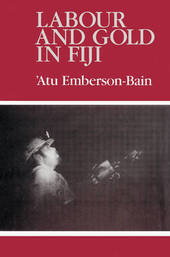
|
Labour and Gold in Fiji
Paperback / softback
Main Details
Description
This book is a study of an important aspect of Pacific history and political economy, the mining of gold and the development of an indigenous labor force in Fiji from 1930 to 1970. The book focuses on the town of Vatukoula, which is in the northwest of Fiji's largest island Viti Levu and is the country's only company mining town. Labour and Gold in Fiji examines the mechanics of the labor market but also focuses on the ordinary working lives, experiences and struggles of the mining community. By examining the impact of gold mining in Fiji, 'Atu Emberson-Bain extracts a number of important themes significant to Fijian social and economic history and the Third World in general.
Reviews"...one of the most significant historical publications to have emerged in the South Pacific in recent years... the record is extensively documented and reflects several years of meticulous research..." Jacqueline Leckie, University of Otago, in The Contemporary Pacific "Emberson-Bain's book is both meticulous in its scholarship and accessible in its writing. It will undoubtedly become the definitive account on the development of gold mining in Fiji." A. Haroon Akram-Lodhi, Times Higher Education Supplement "Emberson-Bain's careful, trenchant analysis of the plight of Fijian gold-mine workers makes her study a more-than-worthwhile contribution to Pacific Island labor history and could well serve as a model to be emulated in future approaches to the history of indigenous workers in Papua New Guinea...Her work stands alone in this field of Pacific Island labor history in finding a place, and a proper place, to discuss so many contemporary issues." M.L. Berg, American Historical Review "The mining industry in Fiji has largely been neglected. Emberson-Bain's book goes a long way to rectifying this situation...The author does a good job of discussing issues of sociological and political concern, such as ethnic relations, the role of indigenous cultural traditions, and the relationship between local government authorities and the mining companies. Also worth noting is the useful coverage of mineworkers' health and safety. By linking this study of the mining industry in colonial Fiji with the literature on the mining industry in Africa--particularly in relation to the use of indigenous labor and ethnic relations--the author succeeds in presenting a study that should appeal to a wide audience." Journal of Interdisciplinary History
|